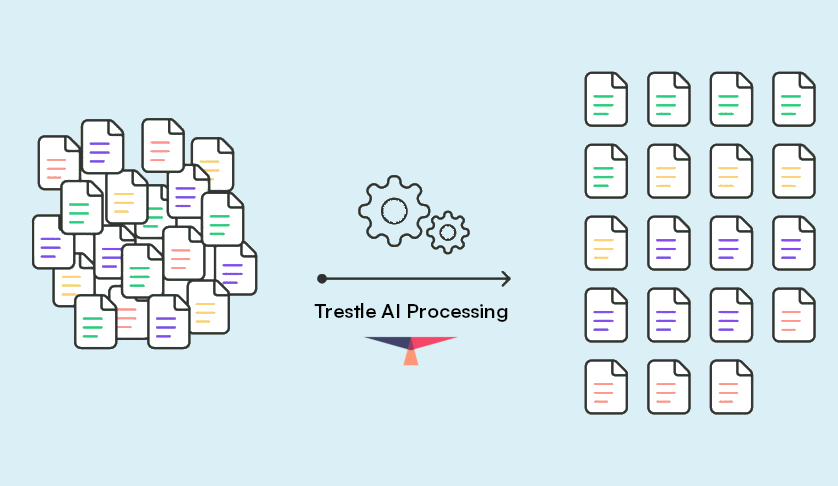Why You Need a Prequalification System and How To Implement One


The subcontractor relationship is crucial to making your projects successful. Subcontractors give you flexibility to bid on more projects, and complete the ones you have on time and within budget. Prequalifying your subcontractors is a great way to build and manage relationships with the best subcontractors.
Vetting subcontractors before you start pursuing projects lets you curate a list of your most trusted firms. With this list, you can move quickly on opportunities, knowing you have the best team in place. You may be doing your prequalifications with emails, PDFs, and a lot of forms. With the right technology, you can refine your prequalification process to make teaming faster.
What Is Prequalification?
Prequalification involves gathering information about your subcontractors without responding to a specific request for bids. Through this process, you will:
- Verify their financial health
- Verify their safety record
- Check to make sure all licenses are up to date
- Verify qualifications and references
- Verify that the firm meets all safety regulations and requirements
Benefits of Prequalifying Subcontractors and Suppliers
When you’re bidding on construction projects, you need a solid team to successfully complete them. If you’re vetting your subcontractors and suppliers during the bid process, you risk not doing a thorough background check to meet the submittal deadline.
Replacing unqualified subcontractors and suppliers costs enormous amounts of time and money that could completely derail a project budget and schedule. Prequalifying your subs reduces your risk of having to replace a subpar firm.
The Bipartisan Infrastructure Law of 2021 has opened up a wealth of infrastructure projects to general contractors across the country. However, part of this law is aimed at protecting workers. Under the law, contractors must provide a living wage and safe working conditions. If your subcontractors violate this or other regulations, they risk being debarred. If you include a debarred subcontractor on your team, you risk:
- Being denied payment
- Canceled contracts
- Becoming debarred yourself
- Being subject to a debarment investigation that can take years
Additionally, failing to comply with governmental standards can result in your termination from these projects and preclude you from future government contracts for up to three years. When you prequalify your subcontractors and suppliers, you can verify all this information before bidding on a project to make sure everyone on your team is compliant.
Inefficiencies in Current Processes
If you’re like many general contractors, you may still be using multiple spreadsheets to track your subcontractors and suppliers. Construction is one of the slowest industries to adapt to new technology.
You may like your spreadsheets, as they give you a single location for tracking contract information, ranking suppliers, and adding notes. However, spreadsheets lend themselves to data entry errors, and you need to make sure you’re updating them regularly.
If you’re using email, PDF forms, and spreadsheets to track your prequalified subcontractors, you risk being out of compliance on potential projects. As a general contractor, it is your responsibility to make sure every member of your team is compliant with licensing, safety, permits, and other legal requirements.
Many of these documents expire, and you need to collect updated forms from each firm before submitting a bid. If not, you could include a team member who has fallen out of compliance, leading to costly project delays later on. Each day your project runs late, you risk accruing liquidated damages that will lower your profit margin.
Why You Need a Prequalification Process
Having a standard prequalification process in place gives you accurate, reliable data you can use to present the best team for every project on every bid. A standard procedure helps you collect the right documentation for each submittal, so you don’t risk including a team member who is out of compliance.
What To Include in Your Prequalification Strategy
Streamline your prequalification process with the following elements.
The Right Technology
Make the shift away from multiple emails, forms, and spreadsheets with a centralized platform. Choose a tool made for general contractors so that you can rank your subcontractors and suppliers and make sure you’re collecting the right information. By keeping forms, questionnaires, and evaluation criteria in one location, you can easily update supplier information and pull the necessary licenses and other documents when you need them.
You might need a list of suppliers with diversity certification or a method to automatically notify you if a firm becomes debarred. Choose a platform with artificial intelligence capabilities to easily scan documents and identify missing information.
Additionally, look for a platform that integrates with document-sharing software so you can attach applicable licenses, timekeeping records from your subs, and other documentation you may need on hand for government projects.
Clearly Defined Criteria
Compile common items your potential clients look for in a contracting team and add them to your prequalification criteria. For example, many companies prefer working with experienced, financially stable firms. You may decide that your prequalification criteria include proof of financial stability and five verified references. Make a list of certifications you need for your most common projects and look for prequalified firms that have them.
A Rating System
Use a rating system to evaluate your prequalified suppliers and subcontractors. Decide how you’re going to weigh each criterion and assign scores to each firm. A rating system allows you to be more objective. You have the data you need to select the most qualified subcontractors and suppliers for each project.
Start Your Projects Off Right Every Time
Develop your prequalification process today so you can be more competitive on each proposal. The top construction firms use prequalification processes to save time and make teaming more efficient. By vetting your potential subcontractors and suppliers up front, you can be sure the team you’re presenting for each project is the best.
A prequalification process can also lower your risk of losing time and money by having to replace noncompliant or subpar firms. Instead, you know that each of your project teams is comprised of reliable, experienced firms with skilled workers who can complete each project on time and under budget. Once you’ve set up your process, take advantage of technology that speeds up the process and reduces human error.
Implement a prequalification process using the latest construction-oriented software so that you can build teams with confidence, stand by your work, and satisfy each client.
Keep Reading





